Horsetails
If you think you may have seen horsetails, please contact us by:
- completing this form
- calling our Customer Service Centre on 136 186
- emailing weed.spotters@agriculture.vic.gov.au
Please do not attempt to treat or dispose of this weed yourself. We will treat, remove and dispose of horsetails safely, at no cost to the land owner.
Why you must report horsetails
Horsetails are among the world's worst agricultural weeds because of their invasive capabilities. They are native to all continents except Australia and New Zealand.
Horsetails have the potential to become persistent weeds of wetlands and other low-lying areas in southern Australia.
All species are thought to contain chemicals that are toxic to livestock and small fragments of the roots or stems can produce new plants.
The root system, combined with the plant's ability to fragment, makes horsetails highly invasive and difficult to eradicate once established.
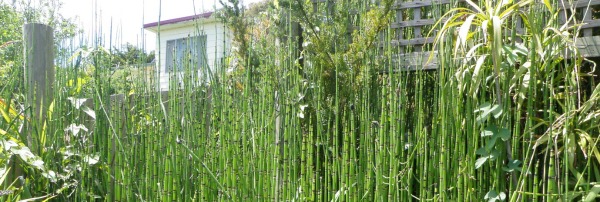
Identifying horsetails
Horsetails are prehistoric, non-woody herbaceous plants. Depending on the species, heights vary from 5 cm to 120 cm. Some varieties die back to their underground parts during winter.
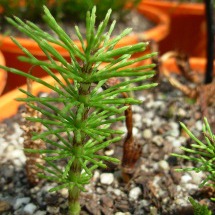
Stems are green, hollow and jointed with longitudinal grooves.
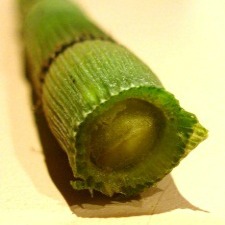
The leaves of horsetails are reduced to form sheaths around the stem.
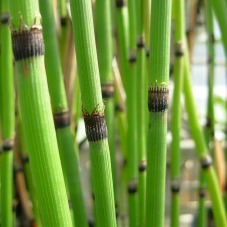
Spore-producing cones found at the apex, which can be seen during spring.
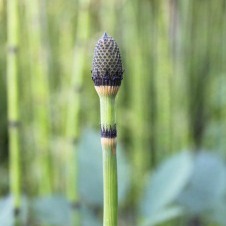
These are horsetails. There are many different species of horsetails and all species are declared noxious weeds in Victoria.
They range in height from a few metres tall down to a few centimetres. Some of the smaller species also go dormant underground in winter and you can see this one is just coming back from winter dormancy.
The stems of horsetails are hollow and segmented. They can be easily squashed between the fingers. The leaves form a sheath around the stem and you can see the grooves that go down each stem. During spring horsetails form cones on the end of the stem and these produce spores.
The roots of horsetails are very strong. You can see this horsetail is bursting out the bottom of the pot. These roots can go up to two metres underground and up to 100 metres sideways.
Horsetails can grow in the water or in the ground. When they are growing in the ground the stems are strong enough to break through bitumen and concrete.
Horsetails 3D model
The New South Wales Department of Primary Industries have developed 3D (three-dimensional) models to help people become more familiar with prohibited invasive plants, including horsetails, by providing a life like representation.
The model can be manipulated and inspected at every angle and magnification and is a great way to become more familiar with horsetails.
© Regional NSW through NSW DPI Invasive Species Biosecurity. Model created by Rachel Klyve.
Lookalike species
Horsetails can be mistaken for restios and rushes such as zebra rush. Some restio species closely resemble horsetails, as they often have sheaths around the joints.
Some rushes also look similar to horsetails, but like restios, rushes don't have nodes at the joints and the stems are quite firm, not hollow, like a horsetail stem.
More information
Horsetails are a descendant of larger plants that grew 270 million years ago during the carboniferous period. They belong to the Equisetaceae family and are a relative of the fern.
Horsetails have a high silica content and are sometimes referred to as scouring rush because they were once used to clean pots and pans. Horsetails have also been used in naturopathy and in some herbal shampoos and conditioners.
